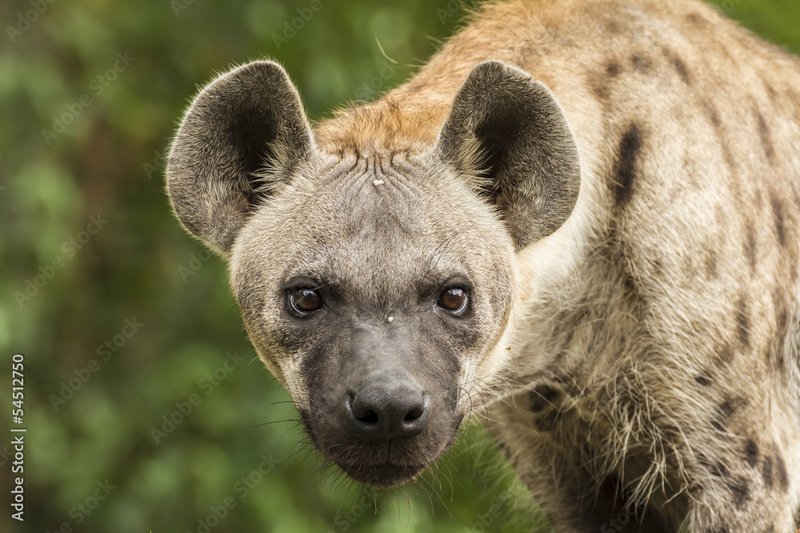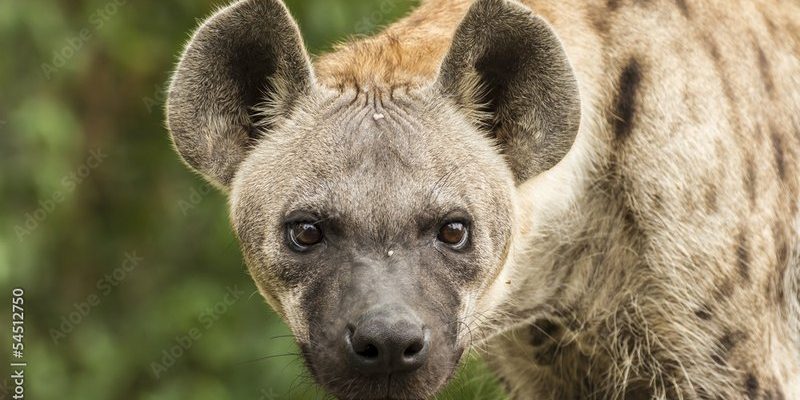
Let’s talk about the spotted hyena, one of nature’s most fascinating and often misunderstood creatures. You might picture them as just scavengers, but there’s so much more to these animals than meets the eye. They have a complex social structure, incredible survival skills, and a reputation that deserves a closer look. Imagine a highly social animal that lives in groups, has a unique way of communicating, and plays a vital role in its ecosystem. Sounds interesting, right?
Spotted hyenas—known scientifically as Crocuta crocuta—are not just the sidekick to lions in documentaries. These animals are skilled hunters and social beings, with a matriarchal society that makes them stand out in the animal kingdom. Think of them like a quirky family that sticks together and navigates the challenges of life in the wild, using teamwork and clever tactics. Their antics can be both amusing and awe-inspiring!
Physical Characteristics
Spotted hyenas are quite distinctive in appearance. They possess a sturdy body with strong limbs and a large head, which makes them look powerful and intimidating. Adult hyenas typically weigh between 90 to 190 pounds and can measure up to 5.5 feet long, excluding the tail. Their fur is usually a light tan or brown color, adorned with dark spots that are as unique as fingerprints. This camouflage helps them blend into their environment, making them effective predators.
One of the most fascinating things about spotted hyenas is their sexual dimorphism. Females are larger and more dominant than males, which is quite rare in the animal kingdom. Female hyenas have a pseudo-penis, which can make it tricky to distinguish between the sexes at first glance. This unusual feature serves various purposes, including establishing dominance and a unique breeding process. Nature sure has its quirks!
Habitat and Range
Spotted hyenas can be found in various habitats, from savannas and grasslands to woodland and mountainous regions. Their adaptability is truly impressive. They prefer open areas where they can hunt and roam freely but can also thrive in more densely packed environments when food and resources are available. As for their range, spotted hyenas are primarily found in sub-Saharan Africa, from the Serengeti plains to the Kruger National Park.
These creatures are social animals that form clans, usually consisting of 5 to 80 members. The size of a clan often depends on the availability of food and other resources. Living in these large family groups allows spotted hyenas to share their hunts, protect each other, and ensure that their young have a better chance of survival. As you can see, their habitat isn’t just a backdrop; it plays a crucial role in their social dynamics.
Diet and Hunting Behavior
The diet of a spotted hyena is as varied as the environments they inhabit. These opportunistic feeders primarily hunt small to medium-sized ungulates, such as antelopes and zebras. However, they are also scavengers and will not hesitate to steal a meal from other predators if the opportunity arises. Imagine a dinner party where the guests suddenly find out that the main dish has been replaced by something tastier—this is how hyenas swoop in and claim their prize!
Hunting strategies are a vital part of their survival. Spotted hyenas often hunt in packs, using teamwork to bring down larger prey. They rely on endurance and can chase their prey for long distances, wearing them down until they can’t run anymore. Their powerful jaws are well-suited for crushing bones, allowing them to access the nutritious marrow inside. This adaptability plays a key role in their ability to thrive in diverse environments.
Social Structure and Communication
When it comes to social structure, spotted hyenas operate in fascinating clans, led by a dominant female. This matriarchal society means that females not only lead but also play a significant role in raising the young. The clan hierarchy is established through various means, including vocalizations, displays, and physical confrontations. The dynamic within a clan adds an element of drama to their lives, similar to a soap opera set in the wild!
Speaking of communication, spotted hyenas are quite vocal and use a range of sounds to convey messages. You may have heard their distinctive laughter, which might sound ominous but actually serves to communicate excitement, distress, or social bonding. They also use body language and facial expressions to communicate with one another. In their world, every sound and gesture counts—like a secret language that only they can decode.
Reproduction and Lifespan
Reproduction in spotted hyenas is as unique as the animals themselves. Mating usually occurs throughout the year, but females can experience a breeding season that peaks at certain times. After a gestation period of about 110 days, a female gives birth to one to four cubs. These cubs are born into a world where they already have a built-in social network, as they grow up surrounded by their clan members, who help care for them.
Interestingly, spotted hyena cubs are quite independent and can start eating solid food at just a few weeks old, but they still rely on their mothers for the first few months. The cubs learn essential skills and social behaviors from their mothers and the rest of the clan, preparing them for life as adults. In the wild, spotted hyenas can live for around 10 to 15 years, but those in captivity have been known to reach ages of up to 25 years!
Conservation Status
Despite their adaptability, spotted hyenas face threats due to habitat loss, human-wildlife conflict, and poaching. While they are currently listed as “Least Concern” by the IUCN, populations in certain areas are declining. Conservation efforts are crucial to ensuring their survival. Education about their role in ecosystems and reducing human-wildlife conflict can help protect these incredible animals.
Efforts to conserve hyenas often involve community engagement. Local populations are encouraged to understand the importance of hyenas in controlling prey populations and maintaining ecological balance. By fostering a sense of stewardship, we can help secure a future for spotted hyenas and the rich biodiversity they represent.
Interesting Facts
| Scientific Name: | Crocuta crocuta |
| Average Weight: | 90-190 pounds |
| Length: | 4.5 to 5.5 feet |
| Habitat: | Savannas, grasslands, woodlands |
| Diet: | Carnivorous (hunters and scavengers) |
| Average Lifespan: | 10-15 years (up to 25 in captivity) |
The spotted hyena is a captivating creature, full of surprises and charm. Their complex society, fascinating physical characteristics, and hunting prowess make them much more than the scavengers we often perceive them to be. By understanding the lives of these remarkable animals, we can appreciate their role in the ecosystem and work towards their conservation. They are a testament to the diversity and intricacy of life on Earth, and perhaps next time you hear that distinctive laugh, you’ll see them in a new light.
FAQ
Are spotted hyenas dangerous to humans?
While spotted hyenas are powerful animals, they typically avoid humans. Most interactions occur when their habitat overlaps with human settlements, leading to potential conflict when livestock is involved. It’s essential to respect their space and avoid encroaching on their territory to minimize danger.
How do spotted hyenas communicate with each other?
Spotted hyenas use a range of vocalizations, body language, and facial expressions to communicate. Their iconic “laugh” serves various purposes, from signaling excitement to recruiting clan members for a hunt. Being social animals, their communication is vital for maintaining their intricate social structure.
What makes spotted hyenas different from other hyena species?
Spotted hyenas are the largest of the hyena species and are known for their unique social structure, which is matriarchal. Unlike their relatives, they are skilled hunters in addition to being scavengers, making them stand out in the animal kingdom. Their distinctive laughter and vocalizations also set them apart.
Do spotted hyenas have natural enemies?
While adult spotted hyenas have few natural enemies, young cubs can be vulnerable to lions and leopards. In their complex social structure, however, clan members work together to protect their young, showcasing their cooperative behaviors. This solidarity is key to their survival.
How do spotted hyenas raise their young?
Spotted hyenas have a unique approach to raising their young. Mothers give birth to cubs and rely on the clan for support. All clan members help care for the cubs, teaching them vital skills and ensuring their survival. This cooperative care promotes strong social bonds and helps prepare young hyenas for adulthood.
What do spotted hyenas eat when food is scarce?
When food is scarce, spotted hyenas will scavenge more often, taking advantage of any opportunity to find a meal. They can also travel long distances in search of food, showcasing their adaptability. Their strong jaws allow them to consume bones, ensuring they can survive even when prey is limited.
Can spotted hyenas be kept as pets?
Spotted hyenas are wild animals with specific social and dietary needs that cannot be met in a domestic setting. Keeping them as pets is not recommended, as they have complex behaviors and require extensive space and social interaction. It’s best to appreciate these fascinating creatures in their natural habitats or through conservation efforts.
How can we help conserve spotted hyenas?
Your contributions to conservation efforts can make a significant impact. Supporting wildlife organizations, spreading awareness about hyenas’ roles in ecosystems, and reducing human-wildlife conflict can all aid in their survival. Every effort counts in protecting these remarkable animals and their habitats.
What is the reproduction process of spotted hyenas like?
Spotted hyenas have a unique reproduction process where females are dominant. After a gestation period of about 110 days, they give birth to one to four cubs. The cubs are raised within the clan, where they learn important social skills from their mothers and other clan members, ensuring a supportive environment for growth.
Are spotted hyenas social animals?
Absolutely! Spotted hyenas are social creatures that live in clans, which can consist of a few to many members. They engage in social behaviors such as grooming, playing, and communicating with each other, forming strong bonds that are essential for their survival and societal structure.
What role do spotted hyenas play in their ecosystem?
Spotted hyenas are important players in their ecosystems. As both hunters and scavengers, they help control prey populations and clean up carrion, which prevents the spread of disease. Their activities contribute to ecological balance, showcasing their vital role in maintaining a healthy environment.

